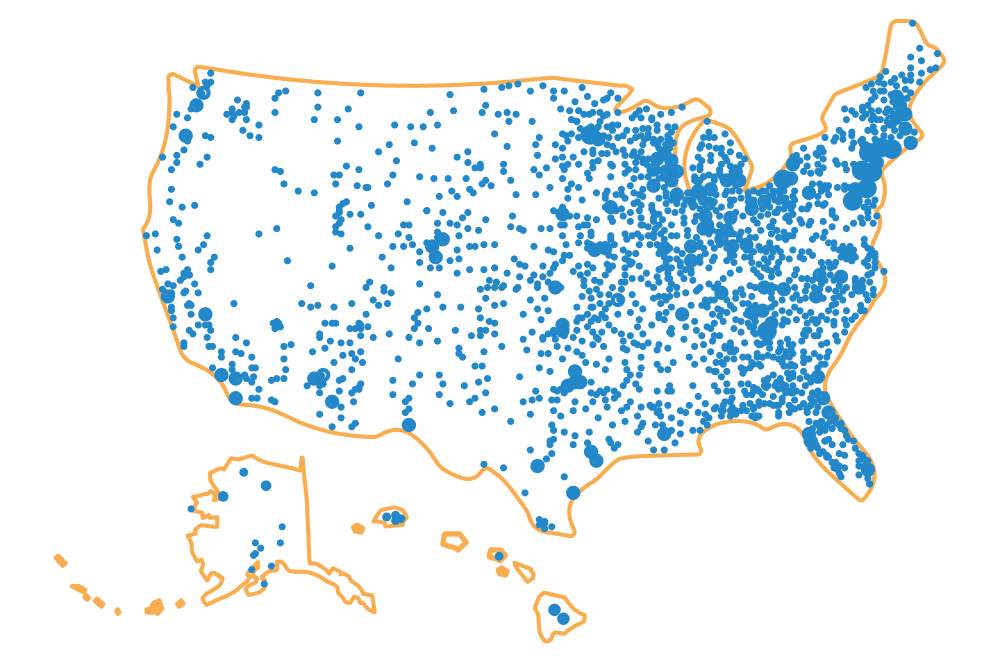Looking for a simple way to grow any savings account, especially for your 529 college savings plan? There are many strategies to build up any money you set aside but the easiest way to grow an account is through automatic contributions. Automatic contributions are deposits that are transferred based on an established schedule from your bank account to your 529 account.
Why is this method so effective? There are many reasons!
Savings comes first
Berkshire Hathaway CEO and Chairman Warren Buffet recommends that you, “do not save what is left after spending; instead spend what is left after saving.”
With automatic contributions, you can pay yourself and then your child’s future higher education first, rather than trying to set aside some dollars to contribute near the end of the pay cycle. Most account owners say it’s easier to set up the automatic contributions and then forget it. You can set these automated deposits according to your paydays or a monthly contribution schedule. Also, if you are opting to manually transfer money to your 529 account, you could just forget to do it.
Setting your family’s budget
It’s also simpler to set up your family budget if you include 529 automatic contributions. Also, you’re sending your money where you want before any funds are siphoned off on all the other costs that unexpected show up between paychecks. The 529 savings add up even when depositing a small amount. If you’ve starting to save for college early in your child’s life, then you can start out with small contributions as you learn how to make your budget work.
Payroll direct deposit
To simplify your saving, see if your employer offers payroll direct deposit. If so, you can have a portion of your after-tax paycheck is deposited directly into your CollegeAdvantage Direct 529 account. To learn more about setting up payroll direct deposit, this article will guide you through the simple steps to take. Payroll contributions makes it easy to save regularly to meet your college-saving goals.
Compound interest
Whenever you start saving in a 529 plan, a huge advantage comes into play to build your college savings – compound interest. Compound interest is the interest on the principal as well as any other accrued interest. For Ohio’s 529 Plan, compound interest is accumulated on the original as well as every 529 contributions, any earnings from the 529 investment options, and any accrued interest.
If you’d like to see the power of compound interest, use this calculator from U.S. Securities and Exchange Commission to input your information to see how compound interest can build up your college savings account.
The effect of compounding is especially powerful over a long period of time as the amount of earned interest grows larger and larger. This is an excellent reason to start as 529 fund as early as possible for your child – to maximize the effects of compound interest in the account. Whether you’ve started saving for your child’s higher education before they are born or if you are getting a later start, Ohio’s 529 Plan offers account strategy suggestions based on your child’s age. These life milestones are the perfect opportunity to start, ramp up your saving, and take advantage of Ugift and Upromise. Based on your child’s age — baby to toddler, kindergarten to elementary school, middle school, high school, and college — review the appropriate guidance and choose for yourself the best path for your 529 account.
Dollar-cost averaging
Dollar-cost averaging is an investment strategy. When you contribute regularly to an investment, you will buy shares both when their costs are higher as well as when they are lower. In general, your dollars will purchase more shares while the market is down. This process can allow you to end up with more shares of these investments at a reduced cost. When the stock market stabilizes, you will likely have more in your 529 plan that is ready to grow.
Tax benefits for saving in a 529 plan
And why should you save for college in Ohio’s 529 Plan? The tax advantages are hard to argue with.
First, all earnings in a 529 plan are tax-free, so all investment growth is yours to cover college costs.
Second, 529 plan withdrawals for qualified higher education expenses are tax-free at federally accredited programs. These expenditures include tuition; room and board (on and off campus) when the beneficiary is enrolled at least half-time; mandatory fees; computer equipment and related technology as well as internet services; books, supplies and equipment related to enrollment and classes; and certain expenses for a special-needs student. Passed in 2019, SECURE ACT added two new qualified expenses that can be paid with tax-free 529 withdrawals. Now, certain apprenticeships costs — fees, textbooks, supplies, and equipment, including required trade tools— can now be paid with a 529 withdrawal. The apprenticeship program must be registered with the Secretary of Labor’s National Apprenticeships Act in order to use a 529 plan withdrawal. Interested parties can check the Labor Department’s search tool to confirm that a program is eligible. Additionally, families can now pay for any student loan that qualifies for the federal student loan income tax deduction with a 529 distribution. There is a $10,000 lifetime limit per 529 beneficiary. However, an additional $10,000 can be used to repay each of the siblings’ qualified student loans of the beneficiary. All withdrawal requests must be made within the same calendar year in which the expense was incurred, or when the student loan payment was made.
Third, Ohio residents who contribute to Ohio’s 529 Plan, CollegeAdvantage, can deduct their contributions from their taxable state income. The deduction amount is $4,000 per year, per beneficiary, with unlimited carry forward. However, $4,000 is not a contribution cap. If an Ohio taxpayer contributes more than $4,000 in one year, they can continue to subtract $4,000 per year, per beneficiary, from their State of Ohio taxable income until all the 529 contributions are deducted. If you are able to continue contributing to your Ohio 529 Plan now, you will still be able to take full advantage of the up to $4,000 state income tax deduction to help your bottom line during next year’s tax season.
If you’ve already opened your Ohio 529 Plan but haven’t set up your automatic contributions, now is a great time to do so. Just log in to your account and review your funding options, including the Automatic Investment Plan (AIP) and Payroll Direct Deposit.
If you haven’t started to save for college with Ohio’s 529 Plan, you should look into opening an account. To learn more, explore Ohio’s tax-free 529 Plan —The Plan That Can.








